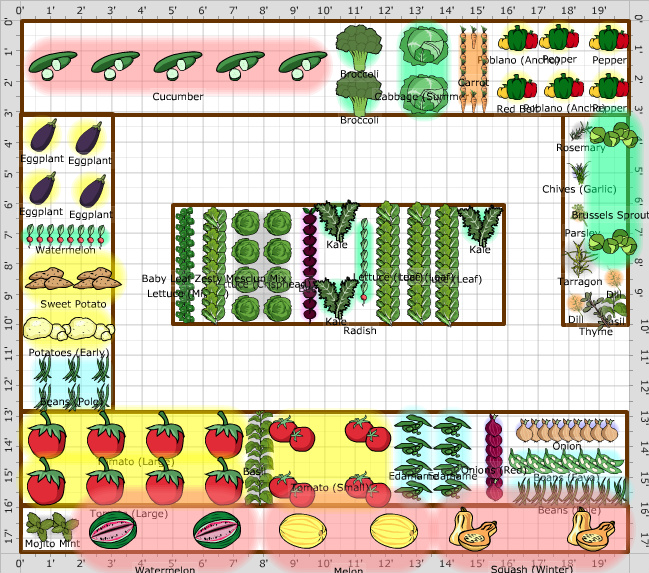
When planning a garden, it is important to ask a few basic questions: Success or failure of home vegetable production can depend on many things, but some major reasons for failure are negligence, not following the proper instructions, and not keeping up with current vegetable developments. The number of home vegetable gardeners is steadily increasing in the state. Many who have grown vegetables for the excellent fresh flavor or as a hobby now find home gardening profitable with today’s high food costs. Home garden vegetables can be grown abundantly in most areas of South Carolina with proper care. Millie Davenport, ©2015 HGIC, Clemson Extension Gardeners grow at Garden Savvy! We provide gardeners with the best tools to plan a garden, organize a garden, and research a garden, with Hortisketch, our Garden Manager and our catalog of gardening Suppliers. Need to remember that favorite supplier? Or which plant variety did best? Store all of this information in the Hortisketch notes section. The planting and spacing guide will help you properly scale your garden based on each plant’s needs. Hortisketch provides a variety of plant icons, accurate growing and spacing information, and a calendar based on your growing zone. Hortisketch makes it possible to plan, build and share your online virtual garden to make your garden dreams come true. Garden Planning with Garden Savvy’s Hortiketch Having all this information readily available to you when you start planning your new garden design for crop rotation purposes will make the process much smoother. Hortisketch also makes it possible to store information like which family each vegetable belongs to.
RAISED GARDEN PLANNER SOFTWARE
Instead, using garden planning software like Hortisketch will remember the information for you. This makes it easy for the process of crop rotation, eliminating the need to remember where your plants were by memory. Start by designing your garden, making sure to label where each plant is going so that you can refer to it for the next time you rotate your crops. Crop Rotation Planning Using a Vegetable Garden PlannerĬrop rotations make vegetable garden planners like Hortisketch extremely useful because of how frequently garden planning is needed when rotating crops. If your vegetable garden is smaller or you simply don’t want to plant that many vegetable varieties, the rotation might include vegetables from only one or two plant families instead of multiple. Once divided, rotate each group clockwise each season. One simple method of crop rotation is to divide your vegetable families into four basic groups legumes, root crops, fruit crops, and leaf crops. For example, if the plant family is Legumes, which consists of beans, peas, chickpeas and lentils, they shouldn’t be planted in the same place in consecutive gardening seasons. Changing the location will balance out the nutrients in the garden, allowing the soil to thrive. This is because different plant varieties use the soil in different ways, take in different nutrients. Plan your crop rotation based on the vegetable varieties you plant, making sure that vegetable crops in the same family should not be planted in the same place in back to back years.

Wait as long as possible to return your plant varieties to a location they’ve previously been in.
RAISED GARDEN PLANNER HOW TO
How to Rotate Crops for Garden SuccessĪ full crop rotation cycle should ideally take place every three to four years, but some gardeners go up to seven years. With more nutrient-rich soil, it decreases the need for fertilizer use, which in turn cuts greenhouse gas emissions. Not only does crop rotation ward off garden pests and diseases, but it also enhances the health of your garden soil, increases your yields, and makes your garden less susceptible to erosion.Ĭrop rotation is also good for the environment in that it minimizes greenhouse gas emissions. Growing them in the same place in back-to-back years makes them a target for problems in the garden. The idea is that moving the crops prevents pests and diseases from living in the garden soil.įor example, moving your tomatoes across the garden will throw off the garden pests who have begun to build up into the soil. The concept of a crop rotation is to keep garden pests and plant diseases out of your garden by switching the location of your crops each year. Crop rotation is one of the oldest tricks in the seasoned gardeners’ book because of its many known benefits. Luckily, this is preventable with the use of crop rotation.


If a particular plant variety is grown in the same place each year, you might start to notice pesky garden bugs or garden diseases pop up.


 0 kommentar(er)
0 kommentar(er)
